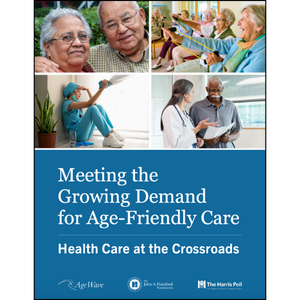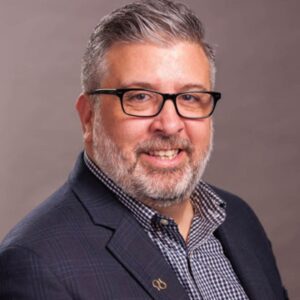Revisions to ACO rule encourage provider participation
Now that the Centers for Medicare & Medicaid Services (CMS) has released its final and revised rule for accountable care organizations (ACOs), post-acute care providers-including skilled nursing facilities-are no doubt assessing their opportunities to participate as contractors.
The new rule, released by CMS in mid-October, makes ACO participation significantly more user-friendly for physicians and hospitals than the original proposed regulation, and has drawn praise from the American Medical Association and several other provider groups. Of course the key to the success of the ACO initiative is the extent to which doctors and hospitals choose to organize ACOs under Medicare.
A key provision of the healthcare reform law, the program will reward providers in ACO partnerships for reducing the cost of treating Medicare patients. ACOs are intended to improve patient care by better coordinating care between a patient’s multiple providers, including hospitals, nursing homes and other healthcare facilities.
“ACOs … can represent a very big step forward in helping to transform Medicare, Medicaid and the Children’s Health Insurance Programs so they can help assure high-quality, seamless and less costly healthcare,” said Donald Berwick, MD, administrator of CMS.
However, Kathleen M. Griffin, PhD, national director of post-acute and senior services at Health Dimensions Group (HDG), doubts there will be a huge rush of providers organizing ACOs, although she acknowledged that significant improvements were made in the final rule that should make it more attractive for providers to participate.
“The new rule makes it much less onerous for physicians and healthcare systems to apply to become an ACO,” notes Griffin. “The ability to share savings is now much less risky and you can share savings without having to withhold 25 percent, as was the case in the first proposal. In addition, ACOs will no longer need to have 50 percent of their physicians meeting electronic medical records meaningful use requirements, as was originally proposed.”
The ACO initiative includes the Medicare Shared Savings Program (MSSP), which now allows ACOs to share in savings generated through one of two options: one in which providers only share in savings that are achieved, and one in which they also would share in losses if costs increase. Unlike the original plan, ACOs that participate in the first option can do so for the entire length of their first agreement period and receive up to 50 percent of savings achieved. In the option in which they agree to share in any losses, ACOs could receive up to 60 percent of savings, depending on quality performance.
The rule also includes an Advance Payment Model intended to determine if paying a portion of an ACO’s future shared savings in advance will increase participation from physician-owned and rural providers for help with launching their ACO. Those advance payments will be recouped as savings are achieved. CMS said $170 million would initially be made available to help with ACO start-ups.
Other concessions by the administration in the final rule include:
A reduction from 65 to 33 in the number of quality measures that ACOs will have to meet to qualify for performance. Quality measures are organized into four major areas: patient experience, care coordination and patient safety, preventive health and caring for at-risk populations.
ACOs will be told in the beginning which Medicare beneficiaries are likely to be part of their system. Under the original plan, ACOs would not know which patients were in the ACO until their contract ended.
Unlike beneficiaries in Medicare HMOs, patients in ACOs may visit any healthcare provider.
Community health centers and rural health clinics, which were omitted from the earlier proposal, will be allowed to lead ACOs.
Despite these improvements, Griffin points to several developments that may reduce the incentive for many providers to rush out and create ACOs.
“Will we see the 240 applications that CMS is expecting? My answer is probably not, at least for a number of years,” says Griffin. “You have to have enough primary care physicians to serve your attributable population and meet the ‘Triple Aim’ of improved patient outcomes and experiences, effective population health management and lower costs.”
However, several external developments may now serve to diminish ACO participation, she suggests.
In several markets, insurers have developed their own shared savings risk agreements with healthcare systems, including Medicare HMOs and PPOs as well as those outside of Medicare. In such cases, those organizations may not feel the need to subject themselves to the additional federal regulations that would be required for ACO participation.
“So in certain markets,” explains Griffin, “there is a lack of incentive for some systems to become part of a Medicare ACO. At least in the beginning, I don’t see a number of health systems that have aligned physicians rushing to apply.”
Griffin points out that preferred provider networks are being established by many healthcare systems across the nation-networks that commonly include SNFs and other post-acute care facilities to which patients are referred.
Meanwhile, the CMS Center for Medicare and Medicaid Innovation has launched its Bundled Payments for Care Improvement Initiative, which offers post-acute care providers a variety of options for entering risk-based contracts with CMS that provide potential financial rewards for achieving improved outcomes, effective patient health management and lower costs.
A white paper authored by Griffin and HDG Senior Consultant Sarah Katz states the degree of provider risk under the program “is minimal and manageable for those who are adequately prepared.” Providers must propose a discount from current fee-for-service payments that will ultimately be reconciled with actual charges and then determine the financial reward or the overage that must be paid to CMS.
November 4 was the deadline for letters of intent and information requests to participate and participants will have until March 15, 2012, to develop final proposals. Griffin and Katz expect a later opportunity to participate.
“This is a great opportunity for post-acute providers, SNF providers, to partner with hospitals,” says Griffin. “So, given all of this, you don’t see quite as much excitement about ACOs as you might have thought.”
Bob Gatty has covered government developments for the trade and business press for more than 30 years. He is founder and president of G-Net Strategic Communications, Sykesville, Md. Long-Term Living 2011 December;60(12):10-13

Robert Gatty has more than 40 years of experience in journalism, politics and business communications and is the founder and president of G-Net Strategic Communications based in Myrtle Beach, South Carolina. He can be reached at bob@gattyedits.com.
Related Articles
Topics: Accountable Care Organizations (ACOs) , Articles











